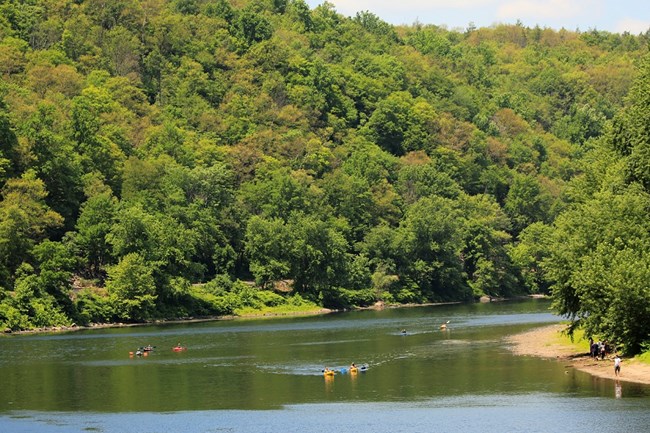Last updated: May 16, 2018
Article
Working Towards Harmony: Park Preservation Intersects With Park Enjoyment

Photo by NPS.
Outdoor recreation is fundamental to American culture. It connects people with nature and history, builds healthier minds and bodies, enhances bonds between family and friends, contributes to the quality of life and resiliency of local communities, and inspires and rejuvenates our spirits. Every year, more and more people seek out public lands and waters to pursue a growing variety of recreational experiences. Attendance at national parks is booming. So much so that for the third year in a row, park attendance shot up to an all-time high, at 325 million visitors in 2016 compared to a record-breaking 307 million in 2015. Some parks have seen increases as high as 40% and 60% over the last several years. Along with preservation of resources, facilitating high-quality visitor experiences and opportunities is critical to the mission of NPS, essential to supporting its strategic goals, and instrumental to achieving the agency’s healthy recreation, youth, urban, relevancy, diversity, and inclusion efforts.
It is a delicate balance to preserve park resources and provide high quality visitor experiences at the same time. While increased visitation is great news, especially when we are targeting to bring parks to a wider audience, it can also result in new demands on facilities and services, operational challenges, social conflicts among visitors, new impacts on natural and cultural resources, and spillover effects on adjacent communities.
One of the ways that NPS is working to bring a better balance between the two is through Visitor Use Management (VUM). Visitor use management includes a flexible set of tools and strategies for managing recreational uses that maximizes the ability of agencies to encourage access, improve visitor experiences, and protect resources and values. The VUM team at the Denver Service Center Planning Division helps to facilitate this process across the agency in collaboration with parks, regions, and program offices. In addition, the VUM team works with the six federal agencies to build shared guidance as part of the Interagency Visitor Use Management Council (the council). The council has released position papers and a Visitor Use Management Framework, and the VUM team is using that guidance for all ongoing projects.
In the last two years, the VUM team has been experiencing increased requests to address a variety of VUM issues and opportunities across the country. These projects include a range of new operational strategies and planning projects including:
- Comprehensive plans (e.g. Zion NP VUM Plan, Cumberland Island NS VUM Plan, and Petroglyph NM VUM Plan)
- Area specific plans (e.g. Glacier Bay NPP Frontcountry Management Plan, Great Sand Dunes NPP Backcountry Management Plan and Haleakala
- Other plan types with significant VUM issues and contributions (e.g. Acadia NP Transportation Plan and Ozark NSR Roads and Trails Plan).
Some of these plans include new techniques for managing use, including more directly managing access through systems such as permitting, reservations, and timed entry.
At the end of 2017, eight of the previously listed plans will have been through public scoping or other civic engagement and four plans, including the Delaware Water Gap National Recreation Area Visitor Use Management Plan/DEIS, will have completed public review on the draft plans and compliance documents.
Get more information and resources about visitor use management. The team collaborates with other NPS program offices on related initiatives such as social science, congestion management, commercial services, interpretation, resource management, wilderness and wild and scenic rivers, and transportation so don’t hesitate to explore opportunities.
